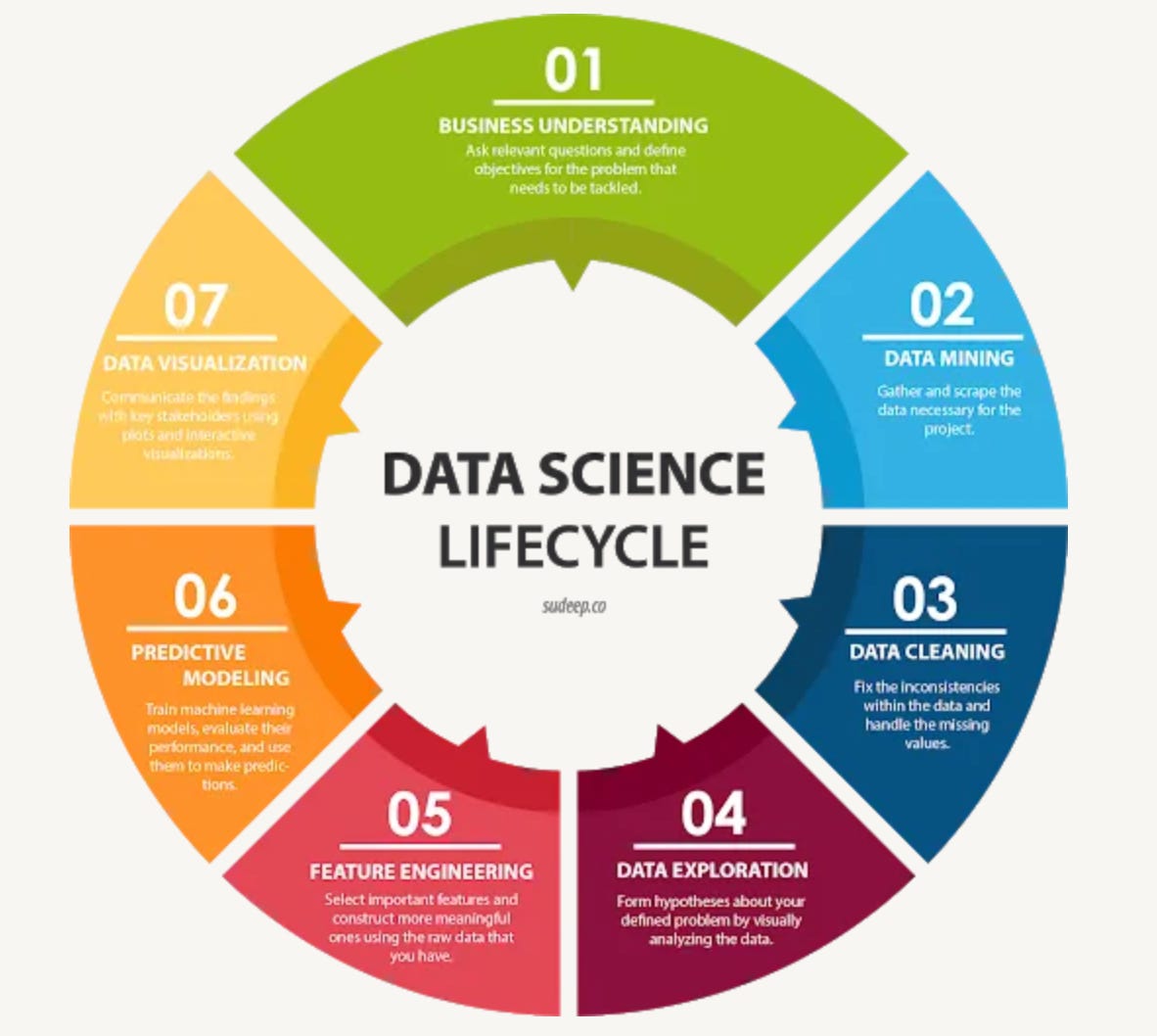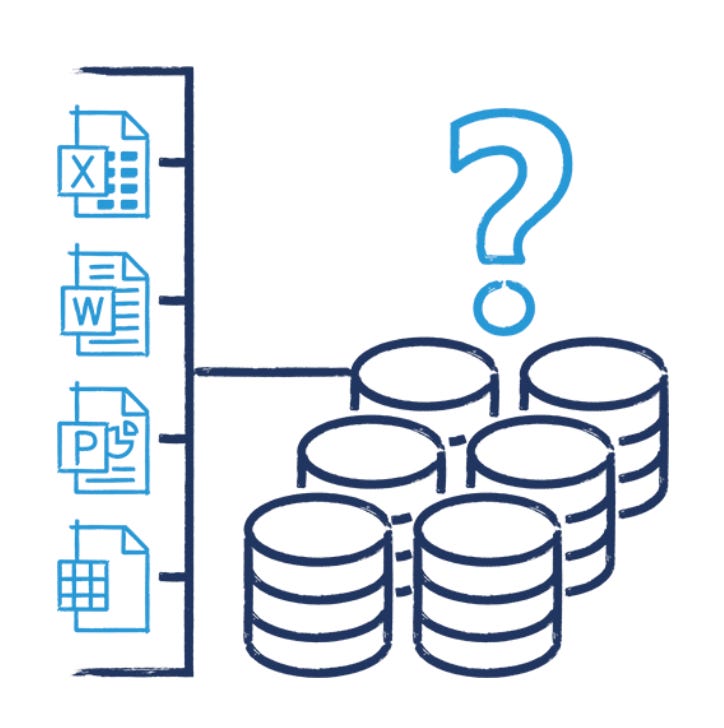Toolbox First, Bling Later: Mastering Data with What You Already Have
We're sharing some recent insights from ongoing project work and linking it to the recent thoughts of other prominent data science bloggers. In our next post, we will introduce some of the initial ideas being developed under our new "StormWiSE" collaboration. In the meantime, check out Dr. Ike Wilson’s new WiSE Substack, Compound Security Unlocked.
A quick shout-out, many of these blogs were shared with me (and the community) through the hard work of John Farrall and his awesome weekly newsletter, the Alternative Data Weekly.
At Storm King Analytics, our team believes in the power of resourcefulness—a recurring theme in the data industry that echoes across multiple insights from experts in the field. As we bring together the lessons learned from our work and the wisdom shared by others, one central idea emerges: the importance of leveraging existing tools and resources before seeking new solutions. From leveraging underutilized Microsoft features to structuring data strategies and creating flexible frameworks, the common theme is maximizing what's already available.
The Bricolage Mindset: Start with What You Have
In a previous update, Dan Evans shared a valuable lesson from his recent work with a federal agency. Drawing on the concept of bricolage, which he learned in a practicum at NYU led by Dr. Christian Busch, Dan highlighted how the agency had overlooked many powerful features within Microsoft 365—tools like Power Automate, MS Lists, and PowerBI. While U.S. government organizations often default to costly new software solutions, the agency learned that using what they already had allowed for significant improvements at no extra cost. This "bricolage" mindset, which means making do with available resources, can spark innovation and cost savings when properly applied.

This lesson parallels the broader data landscape, where data professionals are encouraged to resist the urge to chase shiny new tools and technologies. Instead, success often comes from fully understanding and utilizing the resources already in place.
However, this tendency to focus on high-cost, shiny solutions is especially prevalent in the U.S. military and in many other commercial organizations. Leaders often prioritize purchasing additional technology or building numerous complex dashboards instead of addressing the foundational needs like solid data frameworks and robust processes, such as the Data Analytics Life Cycle (ADLC). Yet, the greatest value is often found in getting the basics right from the outset. Without this foundation, even the most expensive tools won’t deliver their full potential.
Data Literacy: Building Efficiency with Existing Knowledge
Lt. Col. Erik Davis, through his Substack blog Downrange Data, drives home a similar message. In posts like What the Hell is Data Literacy Anyway? and Starting with Data, he illustrates how existing processes in the military were transformed through digitization. By simply starting with data and refining existing systems, Davis was able to cut down on inefficiencies and streamline operations without the need for major overhauls.
The takeaway here is clear: organizations often have the data they need, but they lack the fluency to use it effectively. By focusing on improving data literacy and making the most of what’s available, organizations can unlock a competitive edge without massive new investments. The answer isn’t always more tools—it’s better use of the ones you already have.
Data Architecture: Aligning Existing Systems with Business Goals
In The Enabling Role of Data Architecture, Dylan Anderson elaborates on the importance of aligning data architecture with business strategy. He argues that while data architecture may seem like a technical endeavor, it’s actually a business enabler that improves transparency and decision-making across organizations. The six functions Anderson identifies—including integration, interoperability, and data flow design—are all about streamlining and consolidating what’s already in place, rather than reinventing the wheel.
A well-designed data architecture helps companies avoid siloed systems and uncoordinated efforts. By mapping out how existing tools and data sources connect, organizations can reduce complexity and ensure their resources are working in harmony. Anderson’s message aligns perfectly with the bricolage concept: the key isn’t always to buy new tools, but to ensure that the ones you have work together effectively.
The ADLC Framework: Flexibility with What You Have
In The Analytics Development Lifecycle (ADLC), featuring Captain Jack Sparrow, Alex Welch draws on a creative metaphor to explain how modern analytics processes should be adaptable and fluid, much like Captain Jack’s mystical compass. Welch’s central message is that the ADLC isn’t a rigid framework; it should adapt to the specific needs of a business, helping teams make the most of their current skills, tools, and resources.
The flexibility of the ADLC is a powerful concept—it encourages iterative development and constant recalibration. Welch emphasizes that teams should avoid getting stuck in traditional mindsets and should instead focus on using their current data and analytics capabilities to drive business value. This approach aligns with the broader theme of bricolage: don’t be afraid to use what’s available, adjust as needed, and improve incrementally.
The focus on the basics of data frameworks and foundational processes like the ADLC before rushing to adopt shiny new solutions mirrors the challenges faced by the military and many organizations. Just as in Davis’ experience with the military, overlooking these fundamental elements can lead to inefficiencies and missed opportunities.
A Common Thread: Maximizing Existing Resources
Across these blog posts and insights, one recurring theme stands out: organizations and data teams often already possess the tools and resources they need to solve many of their challenges. The trick is in understanding, integrating, and leveraging those resources effectively. Whether it’s through improving data literacy, refining data architecture, or embracing flexible analytics frameworks, the common message is clear—before seeking new solutions, maximize what’s already available.
The Value of Sharing Insights
At Storm King Analytics, we believe in sharing valuable insights from across the industry to help organizations become more resourceful and innovative. Our team is committed to learning from the successes and challenges of others, and we hope to continue fostering a culture of collaboration and knowledge-sharing.
By embracing a bricolage mindset and focusing on the potential of existing tools and strategies, organizations can drive innovation, reduce costs, and enhance overall effectiveness. Whether you’re working with a limited budget, navigating the complexities of data management, or simply trying to optimize your analytics processes, remember that often, the solutions you need are already in your toolbox—you just need to know how to use them.
Conclusion: Harnessing Bricolage for Innovation
Bricolage, data literacy, and flexible frameworks all point to the same underlying truth: the best solutions are often within reach, waiting to be discovered. By focusing on what we already have, whether that’s data, tools, or processes, we can unlock new levels of efficiency and innovation without always needing to invest in the latest and greatest technologies. Embracing this mindset will help organizations succeed in an increasingly complex and resource-constrained world.
Want to learn more about our firm, or our capabilities? Please contact us through Substack or directly at info@stormkinganalytics.com




